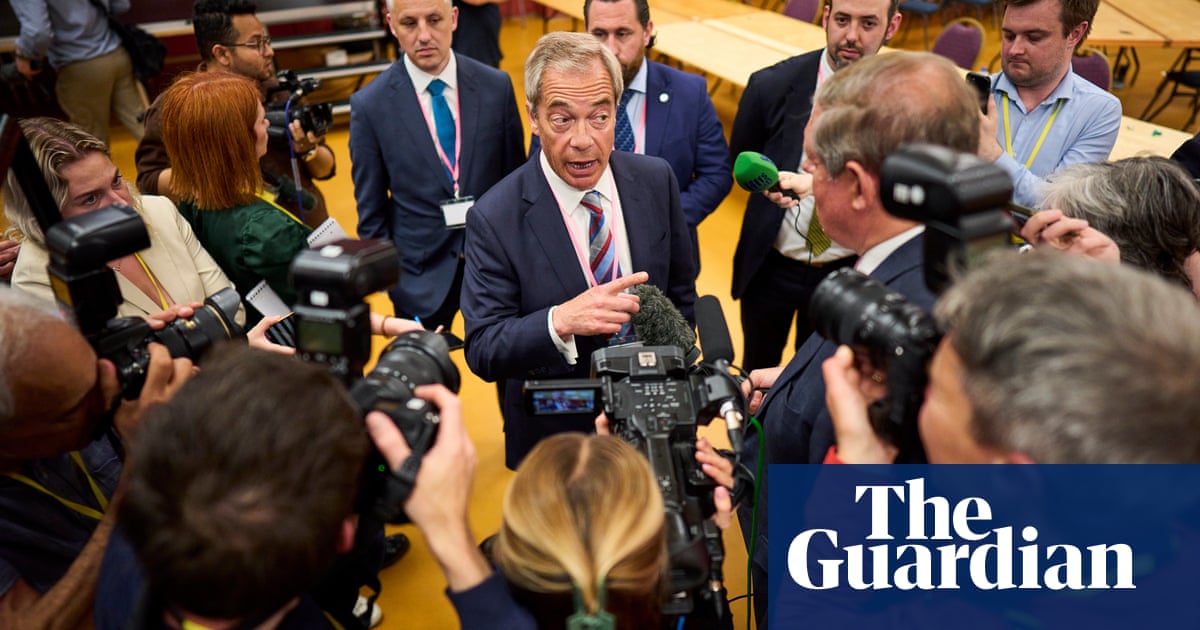Fragmentation in British politics is not new. Disillusionment with the choices on offer is not new. The two-party share of the vote has been below 70% in four of the last six elections. Six months before the 2019 general election the Brexit party topped the EU election results with theLiberal Democratsin second. The 2024 general election had the lowest two-party share in the modern-party system.
What is driving this change? Political scientists talk about the demand and supply sides of electoral politics. The voters are the demand side, what types of parties and positions they want to vote for. They do not always get their wish. Who appears on the ballot paper is the supply side of the electoral equation. Increasingly, it is everyone.
This was evident in the general election, where all seats had at least five candidates and almost half had eight or more. At these English local elections, almost everyone was able to vote forReform UKif they wished to, something that was not even true at the general election in 2024 (where there was a longstanding pact between Reform UK and the Social Democratic party under which Reform did not field a candidate in some places, including Ed Miliband’s Doncaster North seat).
This was undoubtedly a terrible set of results for theConservativesand Labour. While the Conservative losses are staggering in absolute terms, Labour’s are equally bad relative to their starting point.
While Reform was the main beneficiary of Conservative losses, the Liberal Democrats also gained councillors and councils from the Conservatives, highlighting that as main party votes break away, they splinter into fragments rather than moving as a single bloc.
In the run-up to polling day most attention was focused on the Runcorn and Helsby byelection, buta wafer-thin victory for Reformthere did not really give the sense of what was to come, with Reform simply replacing the Conservatives wholesale in some areas.
In Staffordshire, one of the early declarations, Reform gained 49 seats while the Conservatives lost 46 of the 56 won in 2021. In Durham, Reform took control of the council with 65 of the 98 seats. It was an extraordinarily good set of results for Nigel Farage’s party.
But this is far more than a story of an insurgent party disrupting the status quo. It is a story of a deep disillusionment with the political parties that have been in charge in British politics for a century. The electorate saw two unpopular governments, one they recently got rid of and one a large majority did not vote for less than a year ago. No longer bound by old loyalties of class or party, voters are willing to try something else.
For some, that something else is Reform, which was always likely to benefit as the Conservative vote crashed down from the high point of 2021. For others, it is the Lib Dems, who added substantially to their 2021 total, continuing the patterns from the last three sets of local elections gaining in both the “blue wall” seats and the places they were strong in the pre-coalition years. And for a smaller, but also important group, it is the Green party, which made significant gains from a low starting point in these seats.
Fragmentation poses challenges for all political parties seeking to win at the national level.
To do so requires a coalition of voters.Labourmanaged it on 34% of the popular vote in 2024 but against an especially favourable distribution of votes. In other circumstances it would need a far greater share.
Yet the fragments of the electorate are difficult to join together. In Devon the Tories lost seats to Reform on one side and the Lib Dems on the other. Kemi Badenoch’s instinct is to go after the Reform votes, but this will do nothing to stem the flow of votes, councillors and Westminster seats to the Lib Dems, and the Tories also need these for a path back to power.
But fragmentation affects the other parties too. There are faultlines within the coalition Reform is building – some parts are cheerleaders for the Liz Truss approach to economics, private healthcare and the retreat of net zero, while others are in favour of public ownership of industry, more spending on health, and government intervention to improve their local areas.
In a political landscape such as this, the sands need only to shift a little for voters to change priority and party.
Fragmentation is here to stay, but what that means for party support remains unpredictable.
Professor Paula Surridge is deputy director at UK in a Changing Europe and professor of political sociology at the University of Bristol
